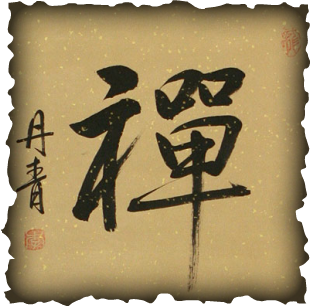MEDITATION
Meditation classes will be offered to Gold Summit students in special sessions.
Taught by: LAOSHI MARKLE
Taught by: LAOSHI MARKLE

Meditation is a tool that gives self empowerment and self awareness to the practitioner who practices properly. Without proper practice, it is easy to go wrong.
Contrary to popular belief, meditation is not simply a way to escape, or enter into a trance-like state that brings us to bliss. Meditation is a way to watch the mind, and thereby make self improvements. The mind is very powerful; Most of the human race allow the mind to run wild, often causing negative affects on the mind, the body and in turn, our lives.
Having an experienced teacher is one thing-but the teacher should actually put into practice the lessons themselves. A good meditation Teacher should live an ethical life, free of taking intoxicants, promiscuity, indulgence and arrogance. In order to guide students, the teacher must understand the obstacles of the mind and of practice, through their own practice and experience. They should keenly understand the EGO, and have faced their own obstacles, demons and ego head on. If not, meditation class is simply a way to manage stress and calm down. And though this is a much needed aspect of living, it is not the totality of meditation practice.
Contrary to popular belief, meditation is not simply a way to escape, or enter into a trance-like state that brings us to bliss. Meditation is a way to watch the mind, and thereby make self improvements. The mind is very powerful; Most of the human race allow the mind to run wild, often causing negative affects on the mind, the body and in turn, our lives.
Having an experienced teacher is one thing-but the teacher should actually put into practice the lessons themselves. A good meditation Teacher should live an ethical life, free of taking intoxicants, promiscuity, indulgence and arrogance. In order to guide students, the teacher must understand the obstacles of the mind and of practice, through their own practice and experience. They should keenly understand the EGO, and have faced their own obstacles, demons and ego head on. If not, meditation class is simply a way to manage stress and calm down. And though this is a much needed aspect of living, it is not the totality of meditation practice.
LEVELS OF MEDITATION AND AWARENESS
There are no hard and fast levels in meditation, however, there are signs and indications of either PROGRESS or DEVIATION from the proper way.
|
PROGRESS
When a person meditates regularly, under
the guidance of a Buddhist monastic, an upholding lay person or in some cases, a Qigong Master, the progress can be seen and felt in some subtle ways. ~A person remains calm in situations that may normally cause stress
|
DEVIATION
When a meditator, a practicing Buddhist or other lay person does not practice with sincerity or with a qualified Master, they will usually show signs of deviance from the true meaning of meditation and self cultivation.
often ~A person will teach Buddhist teachings and meditation with an emphasis on the concept of "emptiness' almost immediately. Though a real concept and level in the progress of becoming enlightened, this is not where 90% of the beginning and practitioners should start. This often indicates a person whose ego and self importance drive their teaching.
~The teachings of Buddhism, morality etc. are twisted so the practitioner and/or teacher can do as they please. For example, regularly dancing, partying, playing music, while speaking about how all things are empty. This type teaches that as long as they and their students abide in emptiness, they have no worries about creating bad karma-or indulging in their pleasures and passions unrestrained. ~The do nothing type: A person may conduct meditation classes with a few breathing techniques but they cannot guide the practitioners through their difficulties. Though a practitioner has to do the work ultimately, a teacher should be able to shed light on the obstacles, visions and/or other experiences that may arise. ~A self proclaimed enlightened person. An enlightened individual will not say they are enlightened. ~False humbleness and arrogance. A person who acts as if they are humble but avoids the true teachings of simplicity, humbleness, compassion, and diligence, is not fit to teach meditation. ~Be careful with 3 day, 7 day, even 1-3 year retreats. Many practitioners who run such retreats do not teach purely all the way to the core. When guiding others to sit for days, months or years, a person should be free of most worldly attachments and not be controlled by their own desires. They should be have many years of austere practice and guidance by a Master in their own practice. They should not teach one thing and practice another. ~Declaring themselves "monks" but yet they have wives. A monastic is a person whom has left the home life to achieve liberation from attachments and worldly pleasures, seeing that these things cause immense suffering. While married people may be great Teachers, if they are moral and upright, they should not mislead and call themselves monastics. ~Beware of classes & retreats for a lot of money. Though a teacher may need to make a living, the quality of the attention and training should reflect the cost. Outrageous cost and a lot of sitting with no genuine Instruction is a red flag. ~Too much talking! A person who feels the need to constantly talk and not teach through example, often prefers to talk and not work. Meditation, like any other art of self improvement takes time, patience and hard work. Too much talking avoids the work. |

